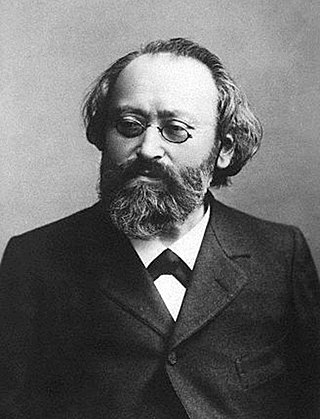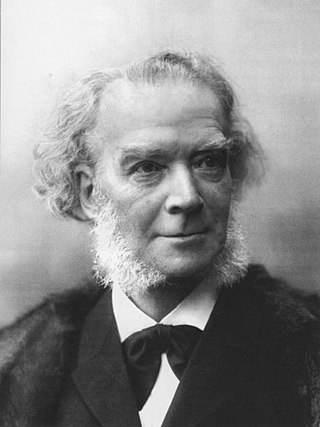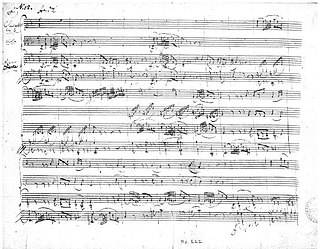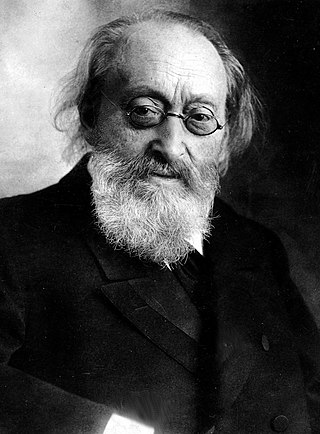This article relies largely or entirely on a single source .(May 2016) |
Max Bruch's Serenade in A minor, Op. 75 is a composition for violin and orchestra that was composed in Cologne in 1899. [1]
This article relies largely or entirely on a single source .(May 2016) |
Max Bruch's Serenade in A minor, Op. 75 is a composition for violin and orchestra that was composed in Cologne in 1899. [1]
The work has four movements and takes approximately 35 to 40 minutes to perform:

Max Bruch was a German Romantic composer, violinist, teacher, and conductor who wrote more than 200 works, including three violin concertos, the first of which has become a staple of the violin repertoire.

A string orchestra is an orchestra consisting solely of a string section made up of the bowed strings used in Western Classical music. The instruments of such an orchestra are most often the following: the violin, which is divided into first and second violin players, the viola, the cello, and usually, but not always, the double bass.

Eugène-Auguste Ysaÿe was a Belgian virtuoso violinist, composer, and conductor. He was regarded as "The King of the Violin", or, as Nathan Milstein put it, the "tsar".

A violin concerto is a concerto for solo violin and instrumental ensemble. Such works have been written since the Baroque period, when the solo concerto form was first developed, up through the present day. Many major composers have contributed to the violin concerto repertoire.

The Violin Concerto in D major, Op. 77, was composed by Johannes Brahms in 1878 and dedicated to his friend, the violinist Joseph Joachim. It is Brahms's only violin concerto, and, according to Joachim, one of the four great German violin concerti:
The Germans have four violin concertos. The greatest, most uncompromising is Beethoven's. The one by Brahms vies with it in seriousness. The richest, the most seductive, was written by Max Bruch. But the most inward, the heart's jewel, is Mendelssohn's.

Carl Heinrich Carsten Reinecke was a German composer, conductor, and pianist in the mid-Romantic era.
The two Serenades, Op. 11 and 16, represent early efforts by Johannes Brahms to write orchestral music. They both date from after the 1856 death of Robert Schumann when Brahms was residing in Detmold and had access to an orchestra.

The Scottish Fantasy in E-flat major, Op. 46, is a composition for violin and orchestra by Max Bruch. Completed in 1880, it was dedicated to the virtuoso violinist Pablo de Sarasate.

Max Bruch's Violin Concerto No. 1 in G minor, Op. 26, is one of the most popular violin concertos in solo violin repertoire and, along with the Scottish Fantasy, the composer's most famous work. It has been recorded often.

A clarinet–viola–piano trio, often titled "Trio for Clarinet, Viola and Piano" is a work of chamber music that is scored for clarinet, viola, and piano; or is the designation for a musical ensemble of a group of three musicians playing these instruments. This combination of instruments differs from other combinations, as the viola and the clarinet share approximately the same musical range, but not the same tone quality.

Max Bruch's Violin Concerto No. 2 in D minor, Op. 44 was composed during 1877, following a failed attempt in 1874, and dedicated to the great Spanish violinist, Pablo de Sarasate. It was premiered in London by Sarasate, conducted by Bruch, on 4 November 1877.

Max Bruch's Violin Concerto No. 3 in D minor, Op. 58, was composed in 1891 and dedicated to the violinist/composer Joseph Joachim, who had persuaded him to expand a single movement concert piece into a full violin concerto.

The Concerto for Clarinet, Viola, and Orchestra in E minor, Op. 88, is a composition by Max Bruch which was composed in 1911. It premiered on 5 March 1912 in Wilhelmshaven by the piece's dedicatees, violist Willy Hess and the composer's son and clarinet soloist, Max Felix Bruch. The score however was published 23 years after the composer's death, finally being released in 1942.
The Concerto for Two Pianos and Orchestra, Op. 88a, was written by Max Bruch in 1912. It is in 4 movements, written in the rarely seen key of A-flat minor, and takes about 25 minutes to perform.

Elisabeth Johanna Lamina Kuyper was a Dutch Romantic composer and conductor.
Max Bruch's Romance for Violin and Orchestra in A minor, Op. 42, was composed in 1874. Bruch had intended the piece to form the first movement of a projected second violin concerto. However the composer found himself unable to progress beyond the first movement and chose to publish the work as a standalone concert piece dedicated to violinist Robert Heckmann who along with Joseph Joachim had assisted Bruch with the violin part.
A concert piece is a musical composition, in most cases in one movement, intended for performance in a concert. Usually it is written for one or more virtuoso instrumental soloists and orchestral or piano accompaniment.

The String Octet in B♭ major, Op. posth., was composed by Max Bruch for four violins, two violas, cello and double bass. Completed in 1920, the year of his death, it is his last work and would not be published until 1996. The work is also known under the name Concerto for String Orchestra (Octet).